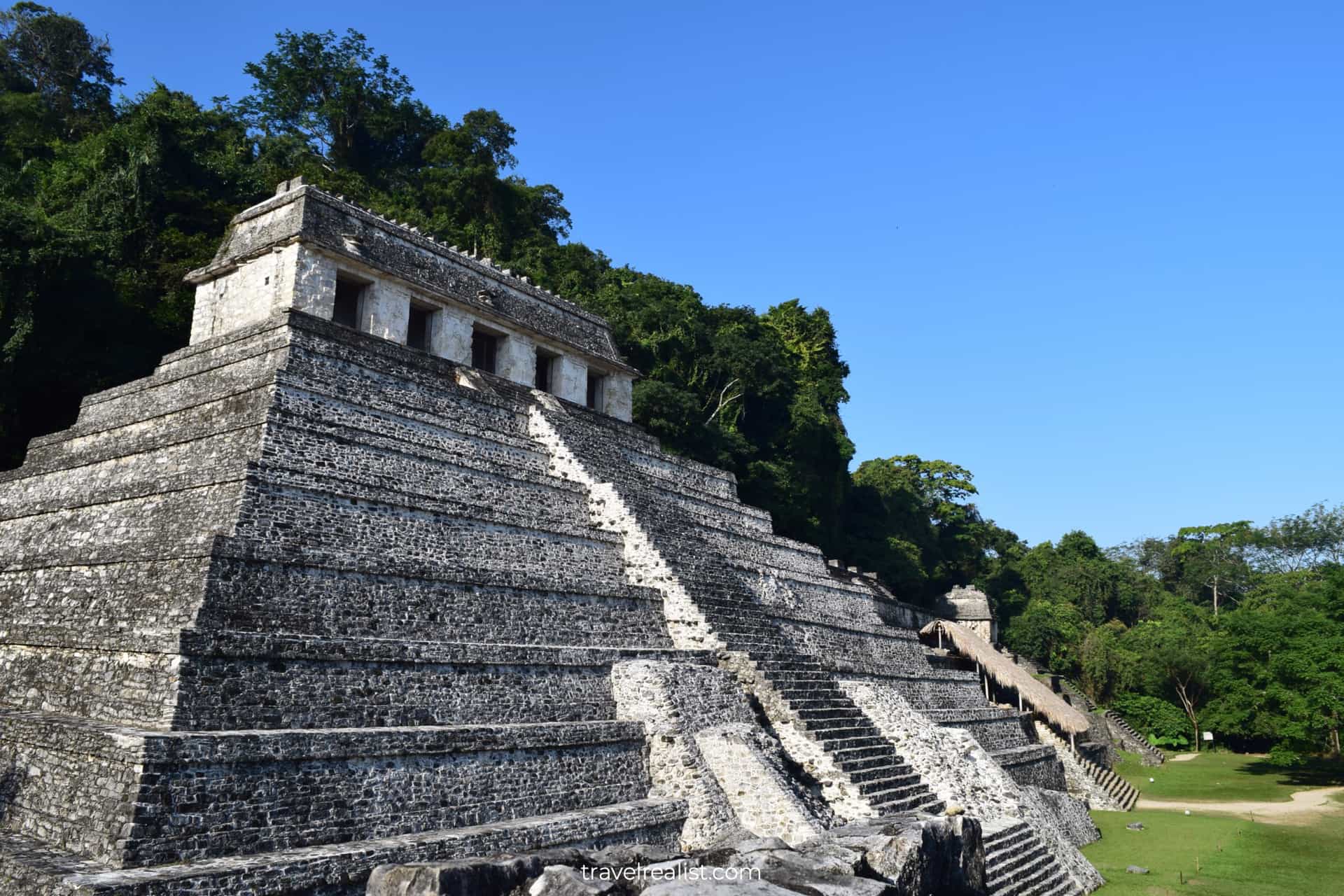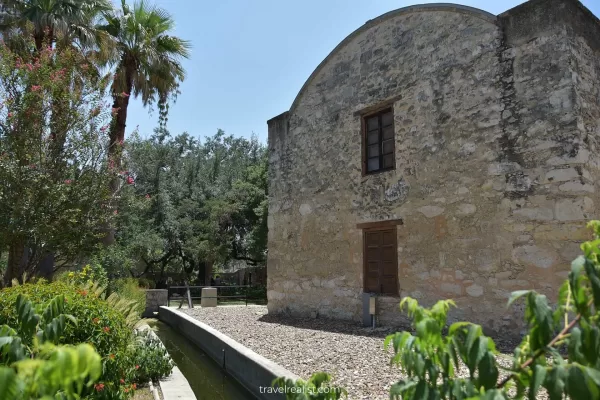Beartooth: The Most Scenic Highway in Yellowstone
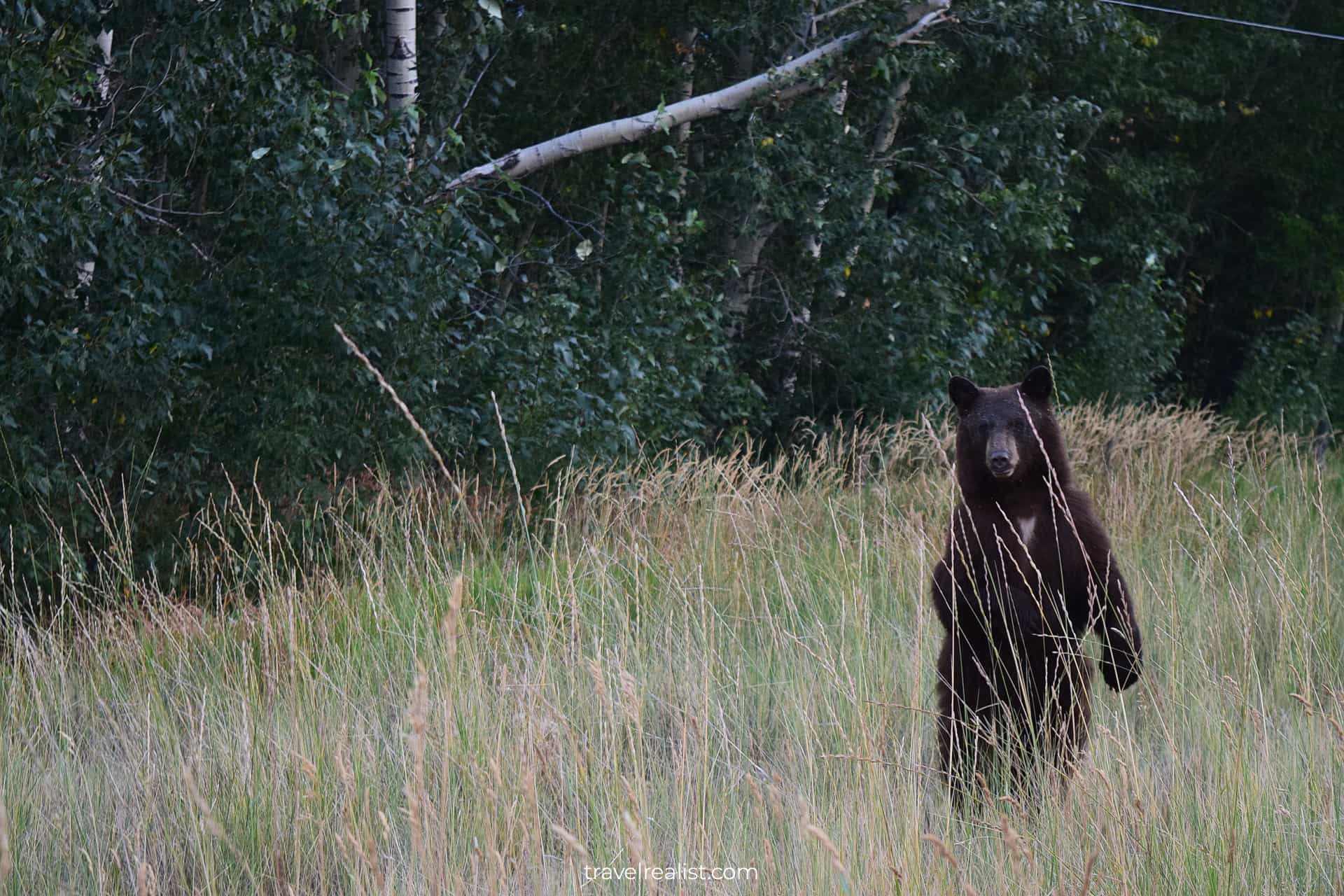
This realistic Beartooth Highway Guide helps you plan your next drive on this National Scenic Byway.
The Beartooth Highway or Beartooth All-American Road is a National Scenic Byway. It connects Wyoming and Montana.
This post includes affiliate links that will earn us commission if you make a purchase via these links.
Sights & Places of Interest
The Beartooth Highway has been one of the most scenic drives in the Unites States since it opened in 1936. It connects Tower Junction, WY with Red Lodge, MT. The highway covers 68 miles (109 km).
It reaches the maximum elevation of 10,947 ft (3,337 m). The Beartooth Highway features a lot of turnouts and overlooks, most in the higher elevation parts of the drive.
This Beartooth Highway Guide follows an eastbound route from Yellowstone National Park to Red Lodge, MT.
Pilot Peak
The first few miles of the Highway provide great views of the Pilot Peak. This mountain peak in Wyoming somewhat resembles a bear’s tooth or a claw.
You might think that or a bear or the Pilot Peak’s shape are responsible for the highway’s name. In a way, neither is true. The Beartooth Mountain Range in Montana gave the highway its name.
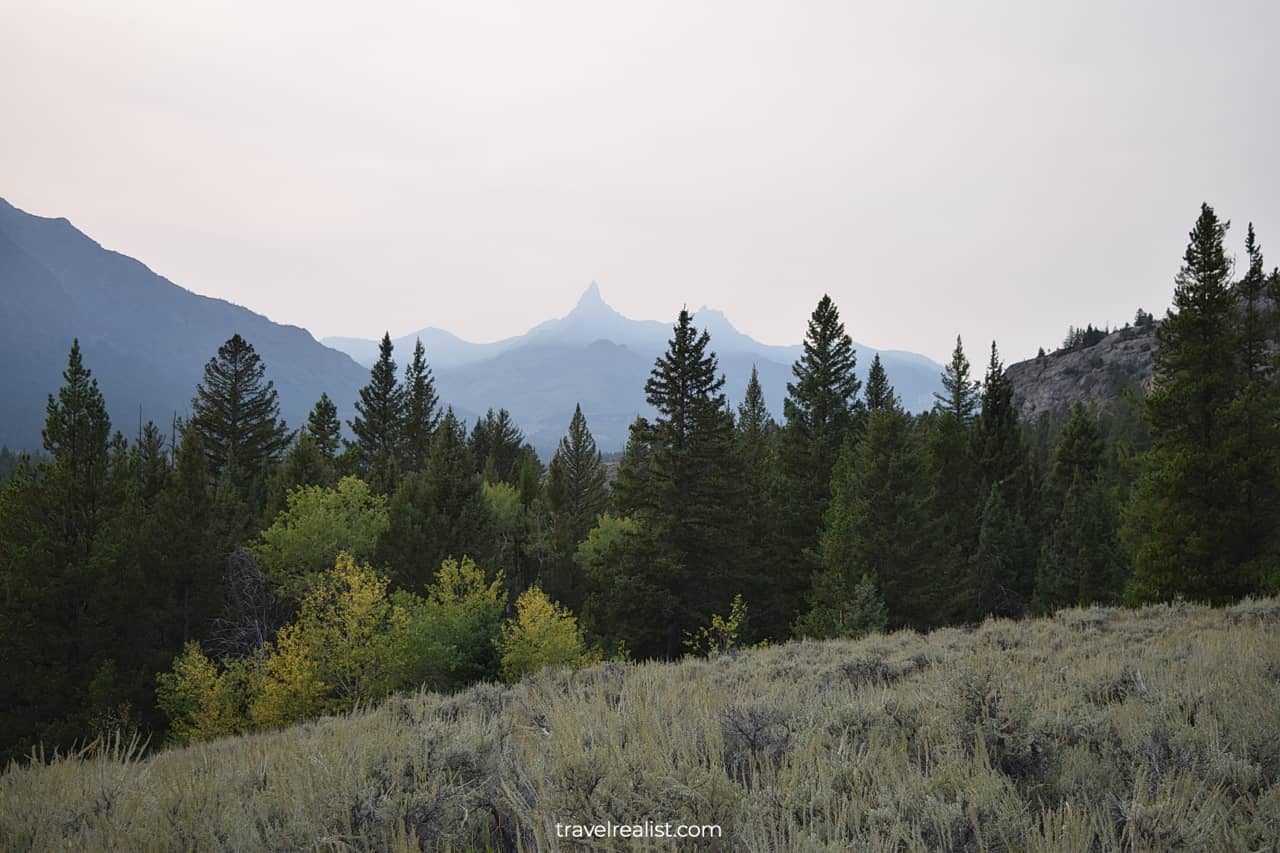
The Beartooth Highway starts in Wyoming. It then briefly enters Montana around Cooke City, MT. The highway returns to Wyoming before the final stretch in Montana.
Once the Beartooth Highway reentered Wyoming, it started to gain elevation. The highway gains about 4,500 ft (1,372 m) in about 30 miles (48 km).
This is just over half of the elevation gain of the Mount Evans Scenic Byway. It is still a respectable result since Mount Evans is the highest paved road in North America.
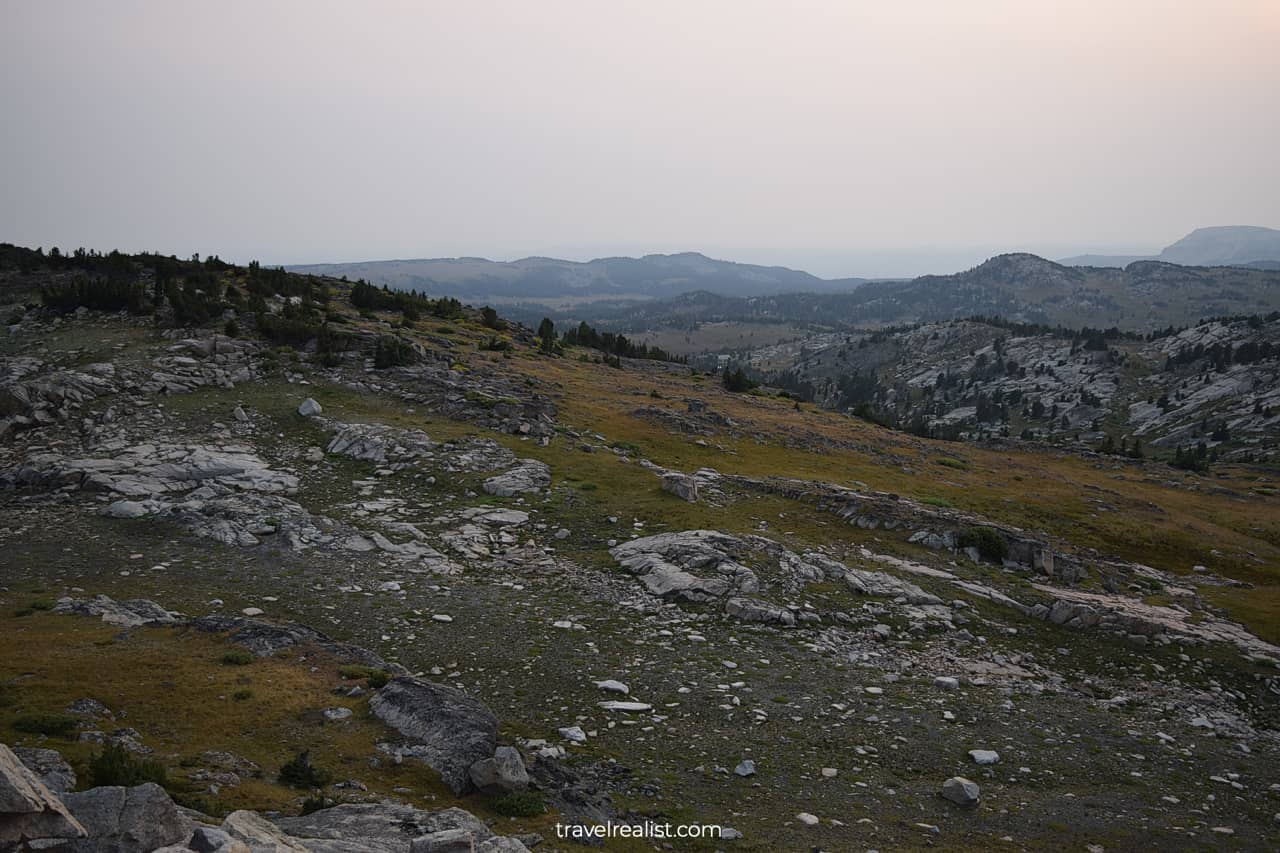
Frozen Lake
You will notice this elevation gain. The surrounding scenery will gradually change. Alpine meadows and forests will give place to rocks and tundra.
This section of the Beartooth Highway proceeds next to several lakes.
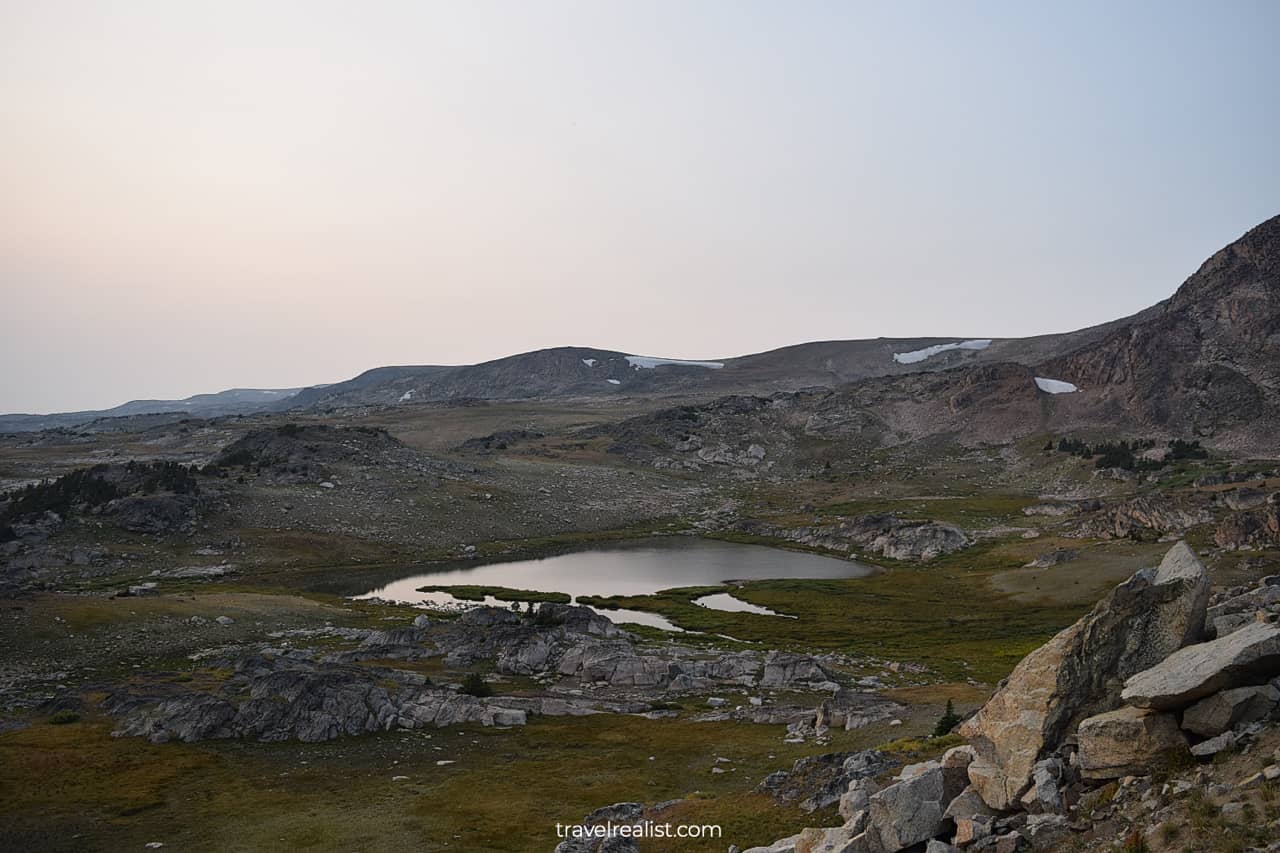
Beartooth Pass
Once the highway enters the Beartooth Pass, the viewpoints become more plentiful. Almost every turn offers a pullout with astonishing views.
The Beartooth Pass landscape resembles the Trail Ridge Road in Rocky Mountain National Park. The highway’s winding turns, or switchbacks, complement the landscape.
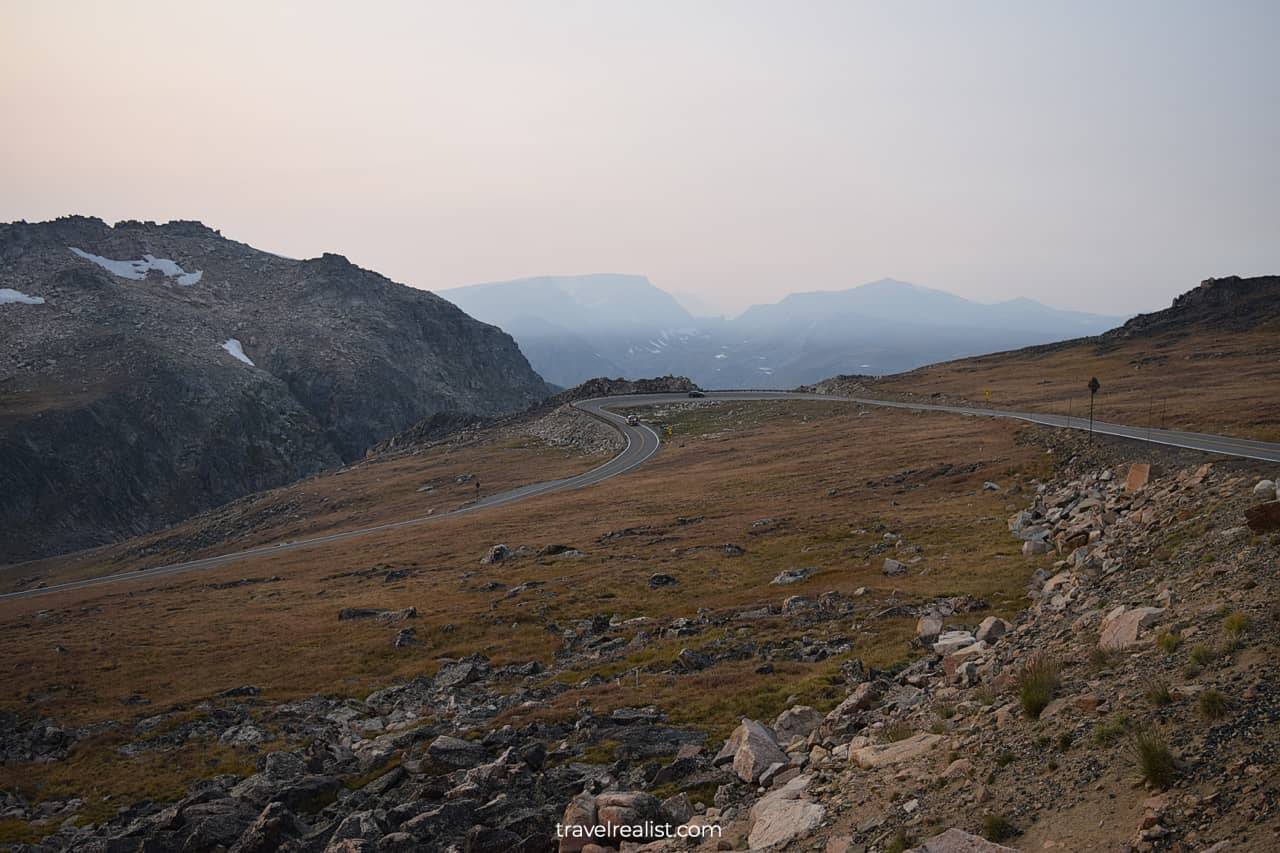
Every time you get out of the car, we will feel the temperature dropping several degrees. The strong cold winds also did not help.
On the one hand, you would want to stay inside the warm car. On the other hand, you would not be able to resist the urge to capture the beauty of this landscape.
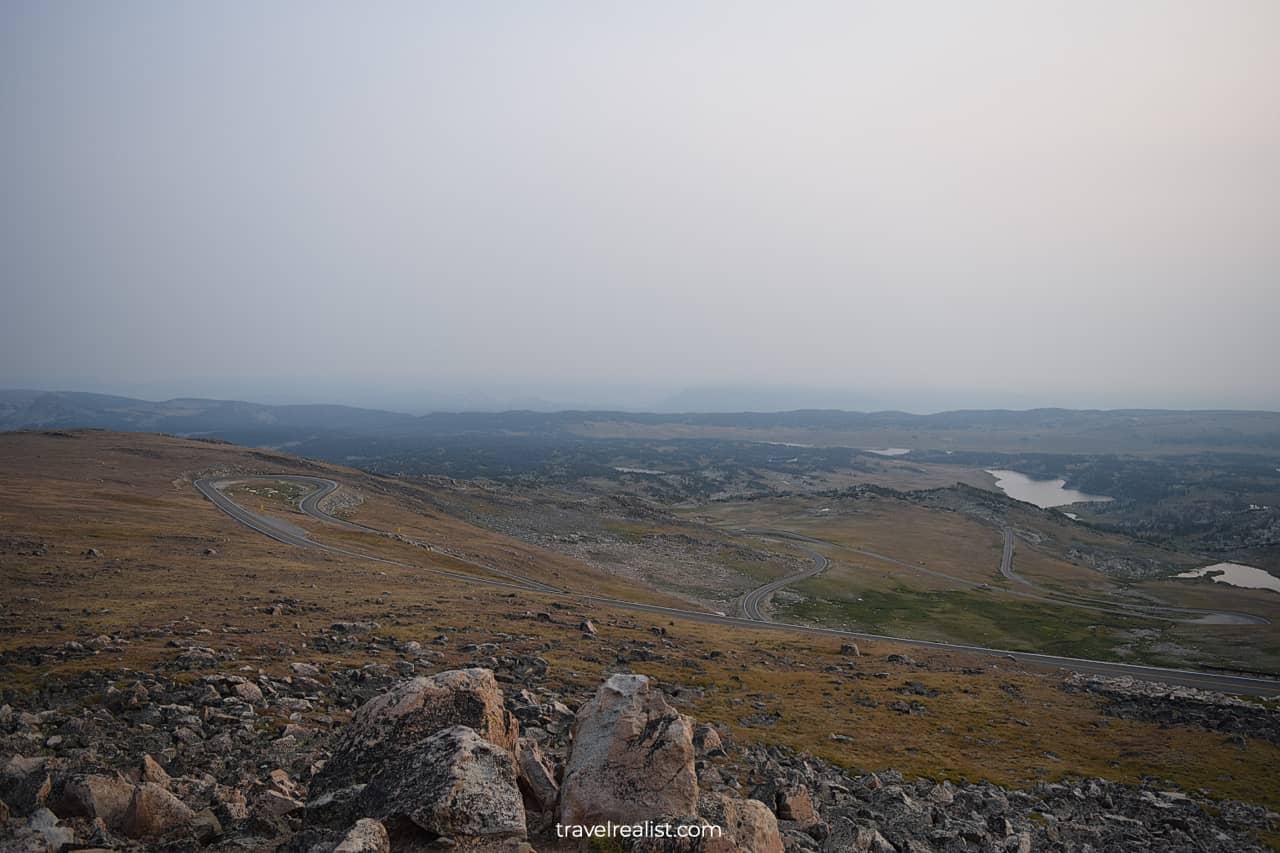
Beartooth Basin
Once you reach the top of the Beartooth Pass at 10,947 ft (3,337m), you will see snow on the slopes. Beartooth Basin is one of the only summer ski areas in the country. Its season runs from Memorial Day until July.
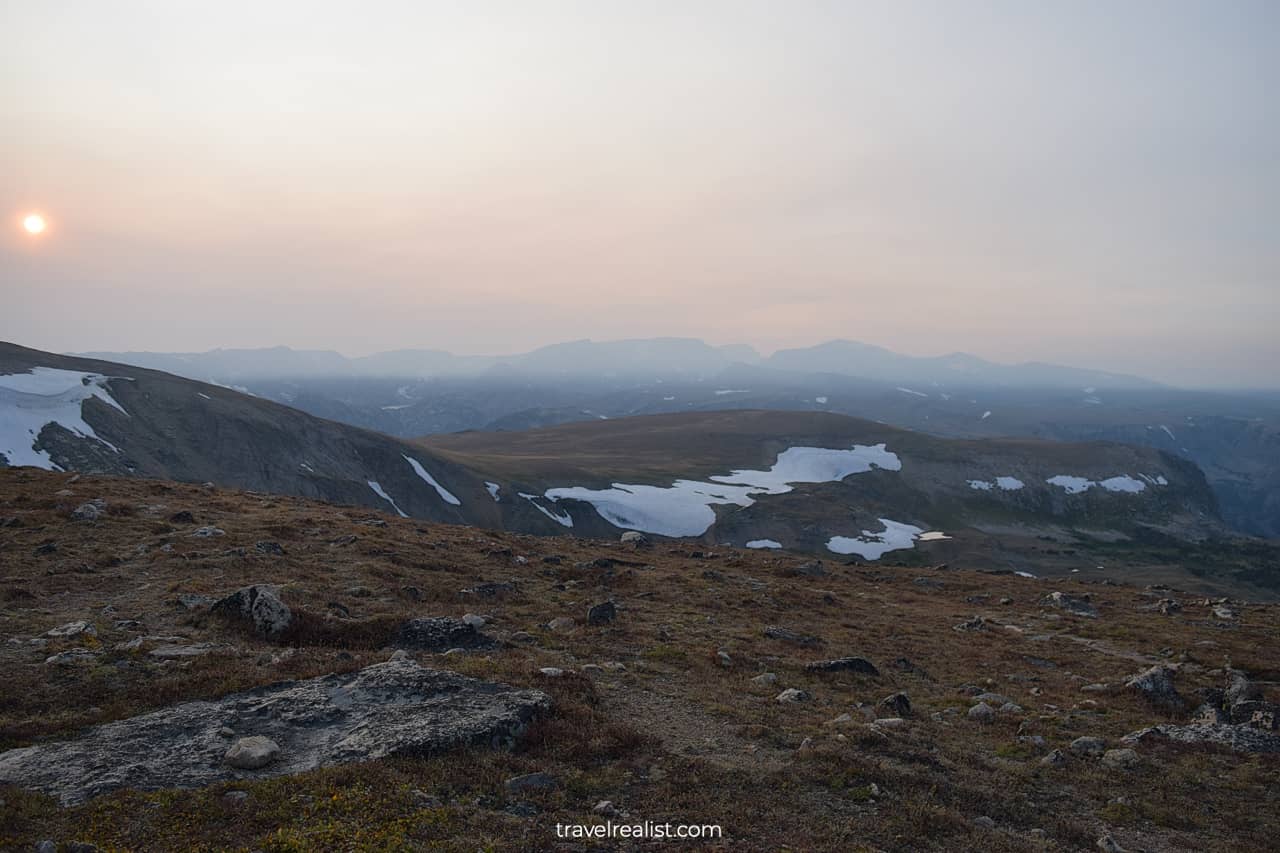
Once you reenter Montana, there will be no more lakes in sight. This landscape looks just like Norway, particularly Geiranger and Jotunheimen National Parks.
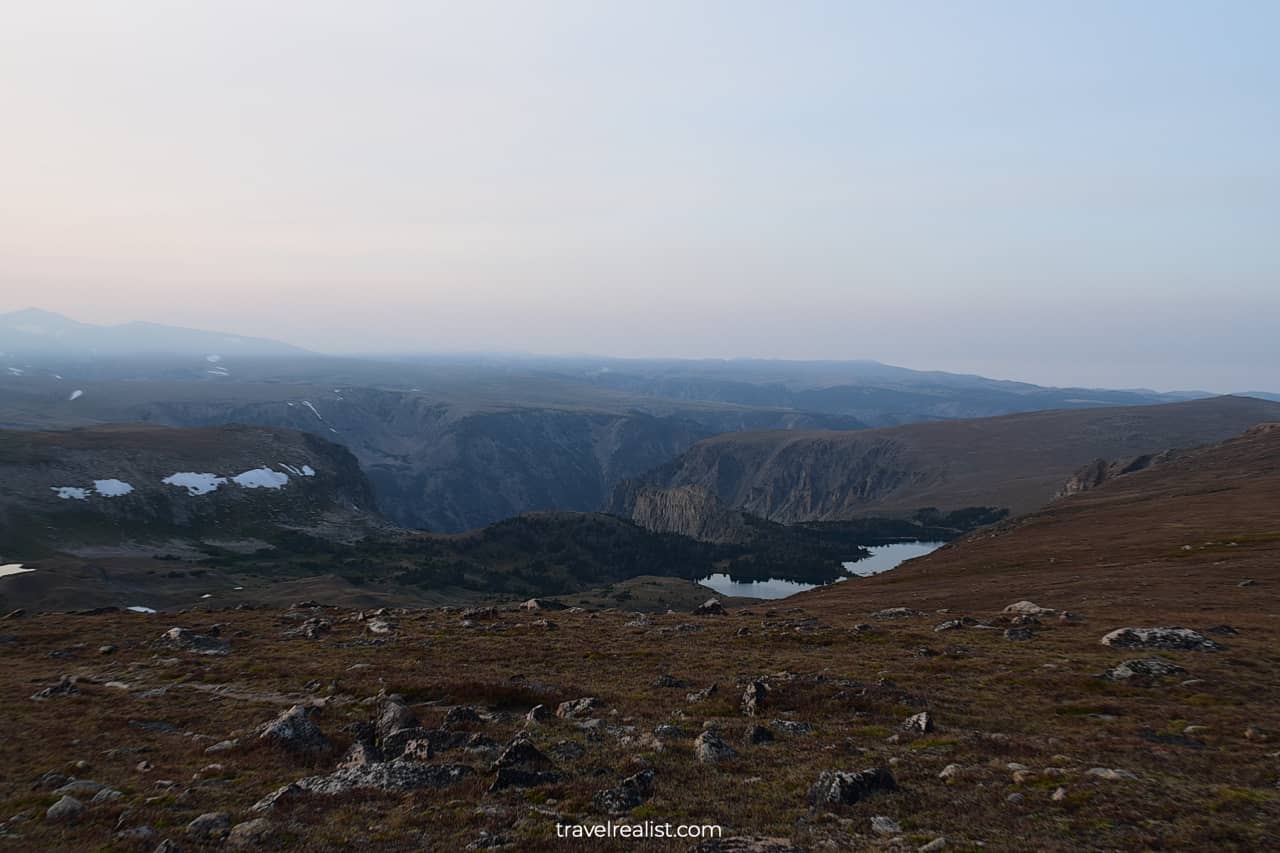
Wildlife Spotting
The highway starts to quickly lose elevation after the Montana state line. You will lose almost 2,600 ft (792 m) over the course of just 10 miles (16 km). The sun might almost set by the time you get to Red Lodge, MT.
This is a perfect time for wildlife spotting. Countless deer will be running next to the highway. And, as a cherry on top, you could even encounter an animal that indirectly gave this highway its name.
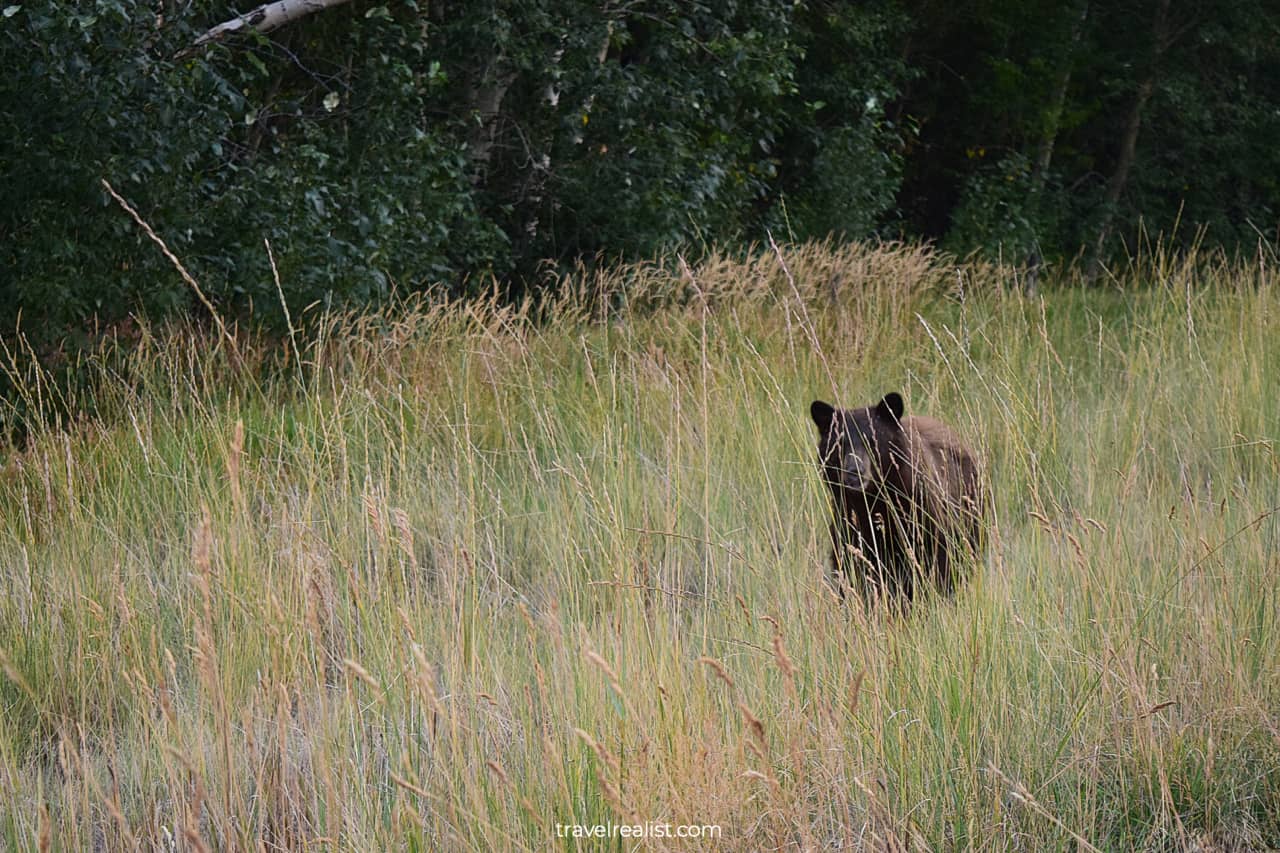
A black bear might decide to cross the highway in front of you. It will be a once-in-a-lifetime experience to see wildlife this close. The bear might study the cars for some time.
But it will quickly lose interest and proceed to eat berries from the nearby bushes. After a few minutes, the bear will disappear in the bushes. It will be a great end to your Beartooth Highway drive.
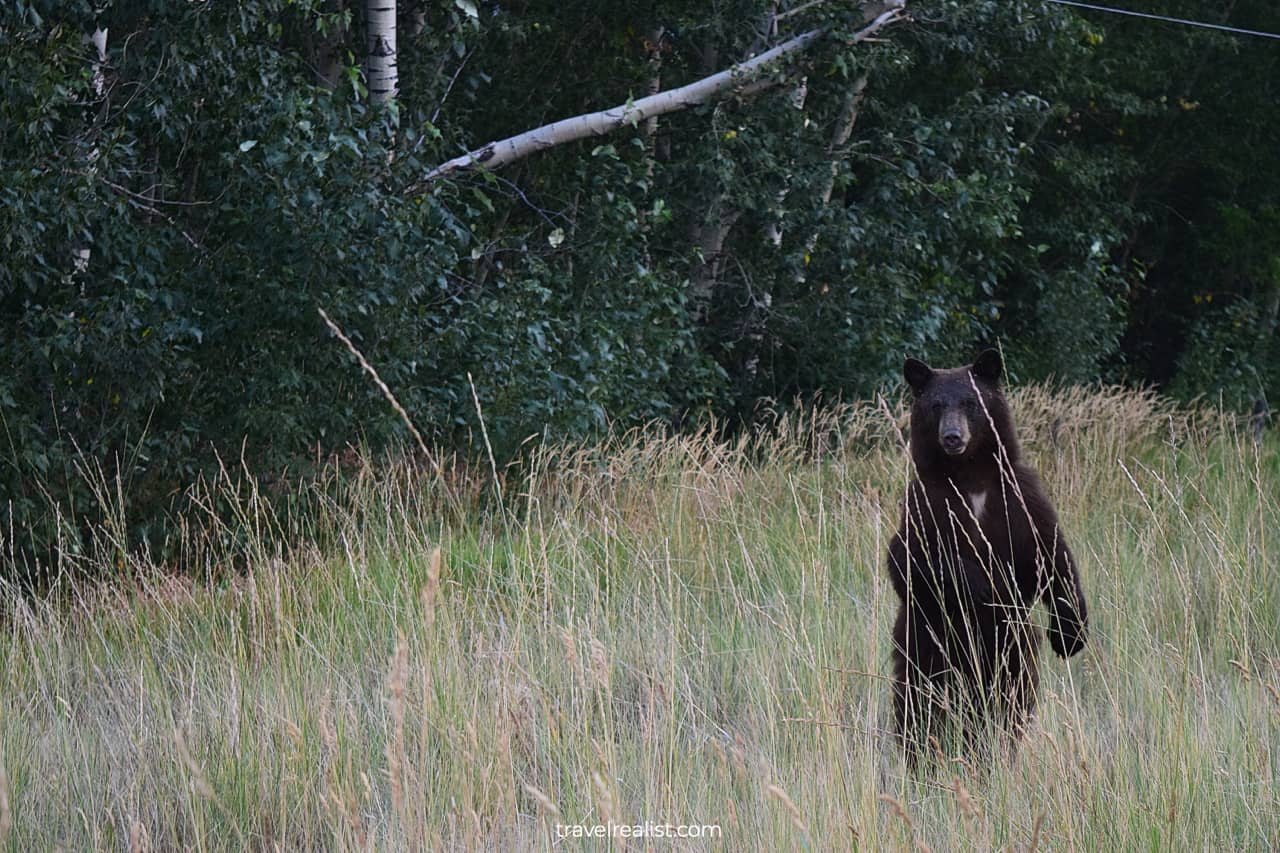
Continue with this Beartooth Highway Guide. You will learn more about ways to get to the sights, entrance requirements, and places to stay.
Getting To Beartooth Highway
The Beartooth Highway (US-212) connects Northwestern Wyoming with Southern Montana. Most Beartooth Highway travelers enter the it from one of the starting points.
You can start either in Yellowstone National Park in Wyoming or Red Lodge in Montana.
The Beartooth Highway has only one midway junction. The Chief Joseph Scenic Byway (WY-296) connects Cody, WY with Cooke City, MT.
Where to Stay
The Beartooth Highway travelers have several places to stay to choose from. There are a few hotels in Cooke City, MT and Red Lodge, MT.
If your trip brings you to Central Wyoming, look into staying in Cody, WY. If your final destination is in Montana, you could look into Gardiner, MT or Billings, MT.
The latter city is the largest city in the state of Montana. With a population over 100,000 people, there are plenty of options for dining and places to stay.
Entrance Requirements & Passes
It is free to drive on the Beartooth Highway. Yet, the highway is closed during the majority of the year. You can only drive on the Beartooth Highway between late May and early October.
This Beartooth Highway Guide describes a summer drive through the Rocky Mountains region.
The highway might close sooner and reopen later due to high snow levels. The highway might also close during the operating season in case of rock- or mudslides.
Check the current conditions before attempting to drive on the Beartooth Highway.
Takeaways: Beartooth Highway
The Beartooth Highway is a must-drive scenic byway if you are driving from Yellowstone National Park to Montana.
Most online maps would lead you on the Highway 89 via Gardiner, MT. You will not regret it if you take a longer route on the Beartooth Highway.
It is one of the few cases when spending additional 1.5 hours driving is worth the time and additional gas. The highway’s elevation gain and views are breathtaking.
Coupled with a priceless chance to see wildlife up-close, this highway is absolutely remarkable. Just be extra careful at dawn and dusk as deer crossings are common.
Take a look at our Beartooth Video Guide and visit our YouTube channel for the latest videos.
Frequently Asked Questions
The Beartooth Highway is one of the most beautiful highways in the US. It brings you from Wyoming to Montana via the Beartooth Pass. The highway reaches the maximum elevation of almost 11,000 ft (3350 m).
One can cover the highway’s 68 miles (109 km) in under 2.5 hours. The drive will take longer if you include the time to get to the starting points and viewpoint stops.
The Beartooth Highway is a rare case when driving additional 1.5-2 hours is well worth the time. The scenery and wildlife you will see along the way is priceless.
The Beartooth Highway usually opens around Memorial Day and remains open until early October. Heavy snowfall, rock-, or mudslides might cause the highway to close unexpectedly and delay reopening.
The best time to drive the Beartooth Highway is between mid June and late August. This way, you can experience the drive during safer road conditions, warmer temperatures, and more likely wildlife encounters.
The Beartooth Highway is stunning in either direction. However, you can reduce glare if you drive the highway from Montana to Wyoming in the morning. The opposite direction is better in the afternoon.
The Beartooth Highway has guardrails. It is still best to exercise extreme caution. Obey the speed limit when driving the switchback turns at the Beartooth Pass.
The Beartooth Highway, including the Beartooth Pass, is completely paved.
Safe realist travels!


